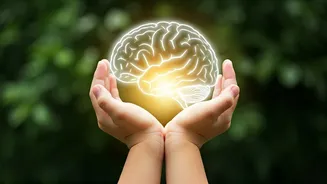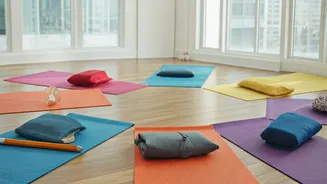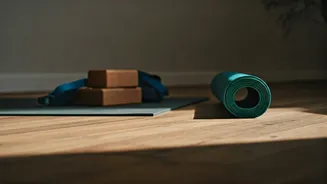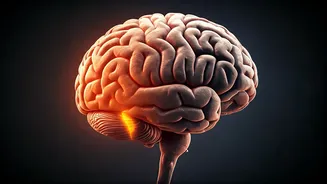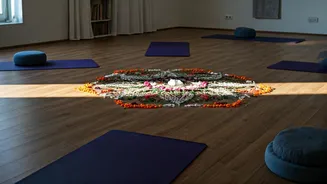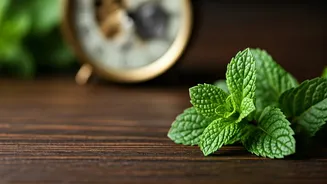Introduction: Yoga's Benefits
Yoga offers numerous benefits for children, extending far beyond physical fitness. Regular practice can significantly improve memory, focus, and concentration.
These asanas, when practiced regularly, have the potential to sharpen the mind and promote mental clarity in young individuals. Incorporating yoga into a child's routine can enhance their overall cognitive abilities and contribute to their academic success and mental well-being. Moreover, yoga also aids in reducing stress and promoting a sense of calm, creating a more conducive environment for learning and development. By introducing these yoga poses, parents can nurture a child's mind and body. Additionally, regular yoga sessions help children develop self-awareness and self-control, which are important for their emotional and mental health.
The Mountain Pose (Tadasana)
Tadasana, or the Mountain Pose, serves as an excellent starting point for any yoga session. To perform this pose, stand tall with your feet together or slightly apart, ensuring your weight is evenly distributed. Engage your core muscles, drawing your navel towards your spine. Extend your arms upwards, keeping them straight, and look up towards the ceiling. Breathe deeply, feeling the stretch in your body. This pose promotes a sense of grounding and stability, which is essential for developing focus. The Mountain Pose helps improve posture and balance, creating a foundation for other poses. Children will feel more centered and prepared to concentrate on the exercises that follow. Furthermore, Tadasana encourages children to become mindful of their bodies and breath, facilitating a better understanding of their physical and mental states.
The Tree Pose (Vrksasana)
Vrksasana, or the Tree Pose, is excellent for enhancing balance and concentration. Begin by standing tall in Tadasana. Shift your weight to your left foot and place the sole of your right foot on your inner left thigh, either above or below the knee. Keep the foot away from the knee. Bring your palms together in front of your chest in a prayer position (Anjali Mudra). If you feel steady, raise your arms overhead, mimicking the branches of a tree. Focus your gaze on a fixed point in front of you (Drishti). Hold the pose, breathing deeply. This pose challenges balance and helps develop focus. It also cultivates patience and mental stillness. Regular practice enhances a child’s ability to concentrate. Tree Pose strengthens the legs and improves overall body coordination. It symbolizes growth and stability, encouraging children to find their inner strength and resilience.
The Warrior Pose (Virabhadrasana)
Virabhadrasana, or the Warrior Pose, comes in multiple variations, all of which improve strength and focus. Start with Warrior I by stepping your left foot back about 3-4 feet, turning it outwards at a 45-degree angle. Bend your right knee until it is over your ankle. Raise your arms overhead or out to the sides. Gaze forward. Breathe deeply and hold the pose, ensuring your core remains engaged. Warrior I builds confidence and strength. Warrior II involves extending your arms to the sides and looking over your front hand. The Warrior poses strengthen the legs, arms, and back while promoting balance. These poses are empowering and energizing. They also foster a sense of determination and self-assurance in children. They teach kids to stay focused even in challenging positions, enhancing their overall mental resilience.
The Triangle Pose (Trikonasana)
Trikonasana, or the Triangle Pose, improves balance and flexibility while enhancing focus. Stand with your feet wide apart, about 3-4 feet. Turn your right foot outwards at a 90-degree angle and your left foot slightly inwards. Extend your arms out to the sides. Bend towards your right leg, reaching down to touch your shin, ankle, or the floor. Keep your gaze towards your raised arm. Hold the pose, breathing deeply. This pose stretches the side of the body and promotes a sense of calm. Trikonasana can improve concentration by requiring a child to maintain both physical and mental balance. The pose stretches the spine and stimulates the abdominal organs. It can help improve digestion and energy levels. Regular practice can lead to a greater sense of body awareness.
The Cobra Pose (Bhujangasana)
Bhujangasana, or the Cobra Pose, is a gentle backbend that can help alleviate stress and improve focus. Lie on your stomach with your hands under your shoulders. Gently lift your chest off the floor, keeping your elbows close to your body. Look up, feeling a gentle stretch in your spine. Breathe deeply, focusing on the sensations in your body. This pose opens the chest, promoting deeper breathing. Cobra Pose gently stimulates the abdominal organs and strengthens the spine. It can help reduce fatigue and increase energy levels, contributing to improved concentration. This pose also creates a sense of empowerment. It encourages children to be more confident in their bodies and abilities.
The Child's Pose (Balasana)
Balasana, or the Child's Pose, is a resting pose that helps calm the mind and body. Kneel on the floor with your knees together or slightly apart. Rest your forehead on the floor and extend your arms in front of you. Take deep, relaxing breaths. This pose is very grounding. It can reduce stress and anxiety. It’s perfect for taking a break between more active poses. Child's Pose helps to calm the nervous system and clear the mind. It allows children to regain their focus and energy. This pose promotes relaxation and self-awareness, creating a feeling of safety and comfort. It's an excellent way to end a yoga session, promoting a sense of peace.
The Bridge Pose (Setu Bandhasana)
Setu Bandhasana, or the Bridge Pose, enhances focus and strengthens the core. Lie on your back with your knees bent and feet flat on the floor, hip-width apart. Place your arms alongside your body. Lift your hips off the floor, keeping your shoulders on the ground. Engage your glutes and core, creating a bridge with your body. Hold the pose and breathe steadily. This pose stimulates the thyroid gland, which can improve cognitive function. Bridge Pose strengthens the back muscles and improves posture. It can help alleviate fatigue and reduce stress. It also improves circulation. Regular practice can lead to greater mental clarity and concentration. It encourages children to be aware of their body and to maintain a steady balance.
The Butterfly Pose (Baddha Konasana)
Baddha Konasana, or the Butterfly Pose, can help release tension and improve focus. Sit with the soles of your feet together, knees bent, and open to the sides. Hold your feet with your hands and gently bounce your knees up and down like butterfly wings. Breathe deeply, feeling the stretch in your inner thighs and groin. This pose promotes relaxation and can help improve concentration by reducing stress. Butterfly Pose stimulates the abdominal organs and helps improve digestion. This asana also cultivates a sense of calm, creating a nurturing environment for mental focus. It’s great for promoting flexibility in the hips and is an enjoyable pose for kids.
The Corpse Pose (Savasana)
Savasana, or the Corpse Pose, is the ultimate resting pose, and an essential part of any yoga session. Lie on your back with your arms at your sides, palms facing up. Close your eyes and completely relax your body. Focus on your breath and let go of any tension. This pose allows the body and mind to completely relax, enhancing memory. Savasana promotes deep relaxation, which is vital for improving focus and concentration. It helps to integrate all the benefits of the other poses. It allows the mind to quiet down. This pose encourages children to be present in the moment and to release any stress or worries. It provides a peaceful conclusion to the yoga practice.
